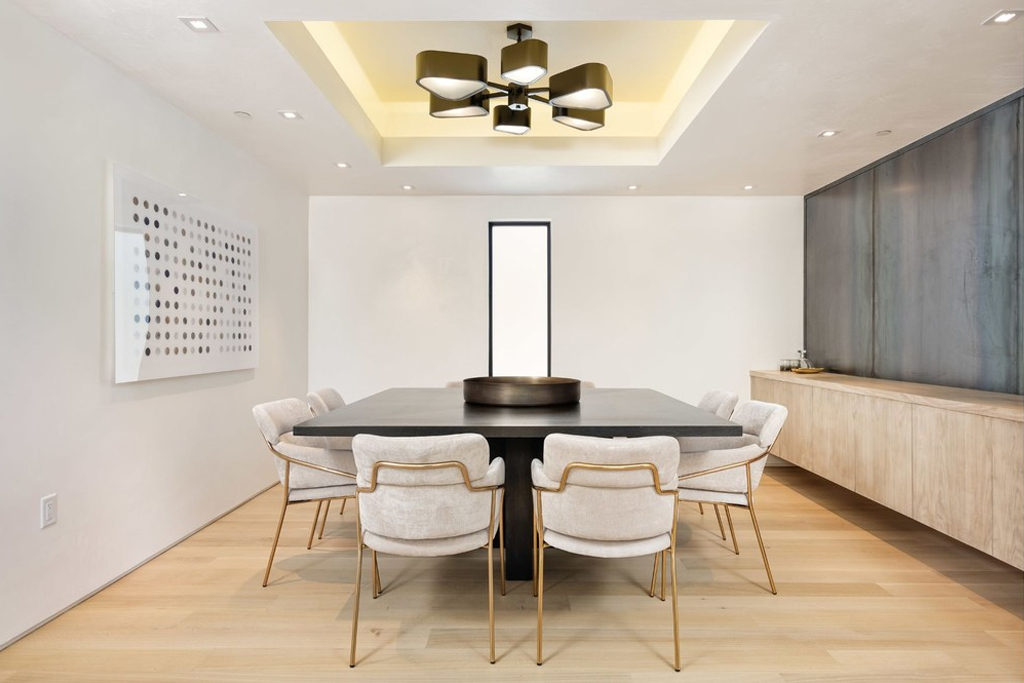There’s an undeniable appeal to walking into a home that is staged and styled to a high standard — especially when that home is on the market. For many buyers, the perfect home can be augmented by beautiful furnishings. And for sellers, having a fully furnished home on the market can be a best-case scenario for achieving a faster sale.
Here in my local market of Aspen, Colorado, furnished homes have been trending for a long time, and many buyers are shopping for second homes that are move-in ready. This area has become a premier holiday destination, and for many luxury buyers, purchasing a vacation property is a decision largely driven by emotion — and spontaneous purchases are made all the more appealing with they’re move-in ready.
For today’s busy affluent consumers, convenience is a priceless ingredient in the process of buying and selling homes, and the luxury of purchasing a turnkey home is gaining traction beyond vacation markets. Here are three instances where selling a furnished home is in your clients’ best interest.
1. When tasteful details help paint a picture

Aspen Snowmass Sotheby’s International Realty
One of the main challenges we encounter when showing homes is making sure we translate the vision of a blank canvas to our clients. Buyers walk into a large, empty space — which, these days, is often open-concept — and they’re overwhelmed, having no idea how they would decorate it.
Having furniture in place can provide the context buyers need to truly feel at home and imagine themselves living in wide-open spaces. And it becomes a value-add for buyers when the attractive furnishings, artwork, and décor they see in a viewing are included in the selling price.
The important piece to negotiate with your clients is how much of their preexisting furniture needs to remain in the home in order to achieve a sale. I work with my sellers before listing to remove 20 to 40 percent of the existing furniture so that the home, and not its interior design, is the focal point. A decluttering is often needed to help the property show at its best and can make the rooms feel lighter and fresher to a buyer seeing them for the first time.
2. When a property is in a remote location
The popularity of furnished listings in second-home markets is already proven, but furnished homes are also a savvy move for buyers when the property is far from a major metropolitan center or designed around indoor-outdoor living.
For buyers in Aspen, for example, Denver is the closest city center — a three-hour drive away. That means that access to furniture options and high-end showrooms is somewhat limited by location. Sellers can appeal to these buyers by marketing properties that they can enjoy as soon as they move in, without the need to invest time and money importing décor and hiring designers.
In markets where the great outdoors is an integral part of the property’s appeal, adding decoration, furniture, and functionality to gardens and balconies can be a similar boon for your sellers. Perhaps the living room connects with an open-air patio and kitchen, or the master suite leads out to a magnificent deck. Indoor-outdoor spaces can be another challenge for prospective buyers to picture. I’ve found that furnishing these spaces helps clients sell their homes because it takes a would-be project off their buyers’ hands.
3. When your client is changing lifestyles

Aspen Snowmass Sotheby’s International Realty
Luxury real estate is a lifecycle-driven market: people might buy a condo when they’re in their twenties or thirties, transition to a larger home when they have a family, return to apartment living post-retirement, and then grow into a detached house when the grandkids want room to run and play. Your client can have a trade-up or trade-down mentality depending on their stage of life, and in the latter case, selling a furnished home gives them a chance to let go of things they no longer need.
Supporting your seller during a lifestyle transition requires honesty. I recently worked with a client who wanted to list their home furnished because they were moving to a smaller property, but the house was over 20 years old and much of the furniture was likewise dated. Rather than list a home with furnishings that looked worn, we hired an interior decorator to help decide which of the older pieces would add charm and authenticity, and how to complement them with the more modern pieces desirable to today’s buyers.
It’s equally important to be forthright with sellers about the potential benefits and drawbacks of investing in new furnishings before they list. The money spent may not be recouped in terms of the sale price — but there’s a strong chance it will pay dividends by reducing the time a home spends on the market. And the right furnishings can help sellers receive closer to their asking price when they do find that ideal buyer.
As with any real estate transaction, helping your clients prepare and sell their furnished property requires you to serve as a trusted consultant and expert advisor. There are times when putting a fully outfitted home on the market makes sense and other times when there may be risks as well as rewards. By understanding your client’s unique situation, you’ll be better equipped to lay out their options and offer recommendations on the best solution.

Andrew Ernemann
An Aspen native, Andrew Ernemann is a Broker Associate at Aspen Snowmass Sotheby’s International Realty. He is experienced in luxury residential real estate as well as commercial sales and has set several sale price records in the Aspen/Snowmass area. A testament to his work ethic and professional approach to the real estate business, Andrew is a past President of the Aspen Board of REALTORS? and has been a recipient of the prestigious REALTOR of the Year award. He is consistently among the top three producing Aspen/Snowmass REALTORS? (in a field with over 600 competitors). Andrew has deep connections in the Roaring Fork Valley and uses his business savvy to help his clients achieve their goals. The complexity and nuances of the Aspen area real estate market demands a broker that can serve as your trusted advisor, something Andrew understands and excels at by diving deep into the local real estate market with a global lens.
About Sotheby’s International Realty
Sotheby’s International Realty was founded in 1976 as a real estate service for discerning clients of Sotheby’s auction house. Today, the company’s global footprint spans 990 offices located in 72 countries and territories worldwide, including 43 company-owned brokerage offices in key metropolitan and resort markets. In February 2004, Realogy entered into a long-term strategic alliance with Sotheby’s, the operator of the auction house. The agreement provided for the licensing of the Sotheby’s International Realty name and the development of a franchise system. The franchise system is comprised of an affiliate network, where each office is independently owned and operated. Sotheby’s International Realty supports its affiliates and agents with a host of operational, marketing, recruiting, educational and business development resources. Affiliates and agents also benefit from an association with the venerable Sotheby’s auction house, established in 1744. For more information, visit www.sothebysrealty.com.
The affiliate network is operated by Sotheby’s International Realty Affiliates LLC, and the company owned brokerages are operated by Sotheby’s International Realty, Inc. Both entities are subsidiaries of Realogy Holdings Corp. (NYSE: RLGY) a global leader in real estate franchising and provider of real estate brokerage, relocation and settlement services. Sotheby’s International Realty Affiliates LLC and Sotheby’s International Realty Inc., both fully support the principles of the Fair Housing Act and the Equal Opportunity Act.
Source: click here














